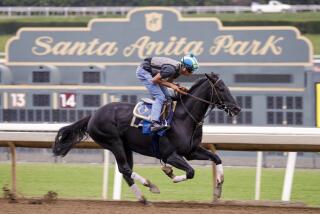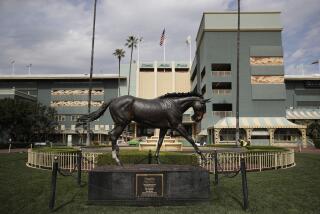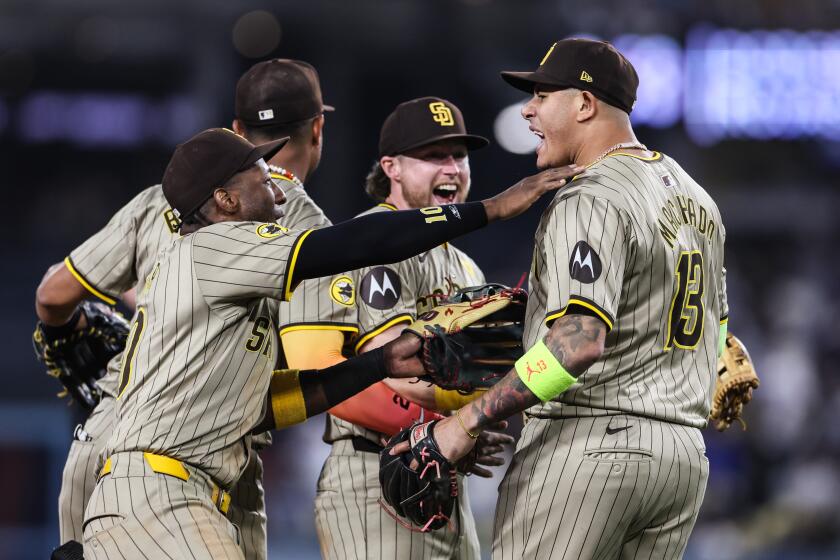Santa Anita’s right turn racecourse: no other track like it in America

About 1 p.m. on Monday afternoon, for the 91st time since Santa Anita started its racing season the day after Christmas, a group of horses will break from the gate and run on the most unique racecourse in the United States.
They will start gaining velocity as they head downhill on the grass, flatten out for a few strides before heading slightly uphill for a couple jumps and then make the only right-hand turn in American racing.
Then, as they continue heading down the hill, they will make the traditional left-hand turn and then change from the turf to the dirt for 80 feet and then the turf again. Finally, things return to normal as the race finishes with a traditional stretch run.
There is little traditional about this course, even the length of the race. In a sport that relies on precision, this race is “about” 6½ furlongs. In fact, it is 1,408.5 yards or 6.4022 furlongs, something that won’t necessarily roll off the tongue of track announcer Michael Wrona.
“I wish everyone could ride it, it’s so unique,” said jockey Joe Talamo, who won the 2009 Breeders’ Cup turf sprint with California Flag over this course. “In North America, every turn we go left. There is only one where we go right and then cross dirt. It’s like a mini-obstacle course. I love it.”
Eddie Delahoussaye so dominated the course when he was riding that a race over that distance was named for him: the Eddie D Stakes.
“It’s a unique course,” Delahoussaye said. “It’s the only one in America like that. You’d think there would be a lot of horses that would want to jump the dirt but it’s amazing how they adapted. It’s very safe. It’s both unique and a very safe course.”
The course was built at the behest of Charles Strub, a former dentist who built the Santa Anita track. He charged Gwynn Wilson, the track’s general manager and former USC sports executive, to come up with something very different.
“It was in the early ’50s,” said Alan Balch, a former Santa Anita executive and currently the executive director of the California Thoroughbred Trainers. “Dr. Strub wanted a grass course and there were none in the western United States. As with most things with Dr. Strub, he wanted something unique.”
Wilson was sent to Europe and came back with the idea for a course that took advantage of the natural undulations of the area near the track, and even make a right turn, the way races are run in Europe.
You’re going downhill so fast that it’s more of a right than you think it is.
— Mike Smith, Hall of Fame jockey, on Santa Anita’s famed right turn on the turf course
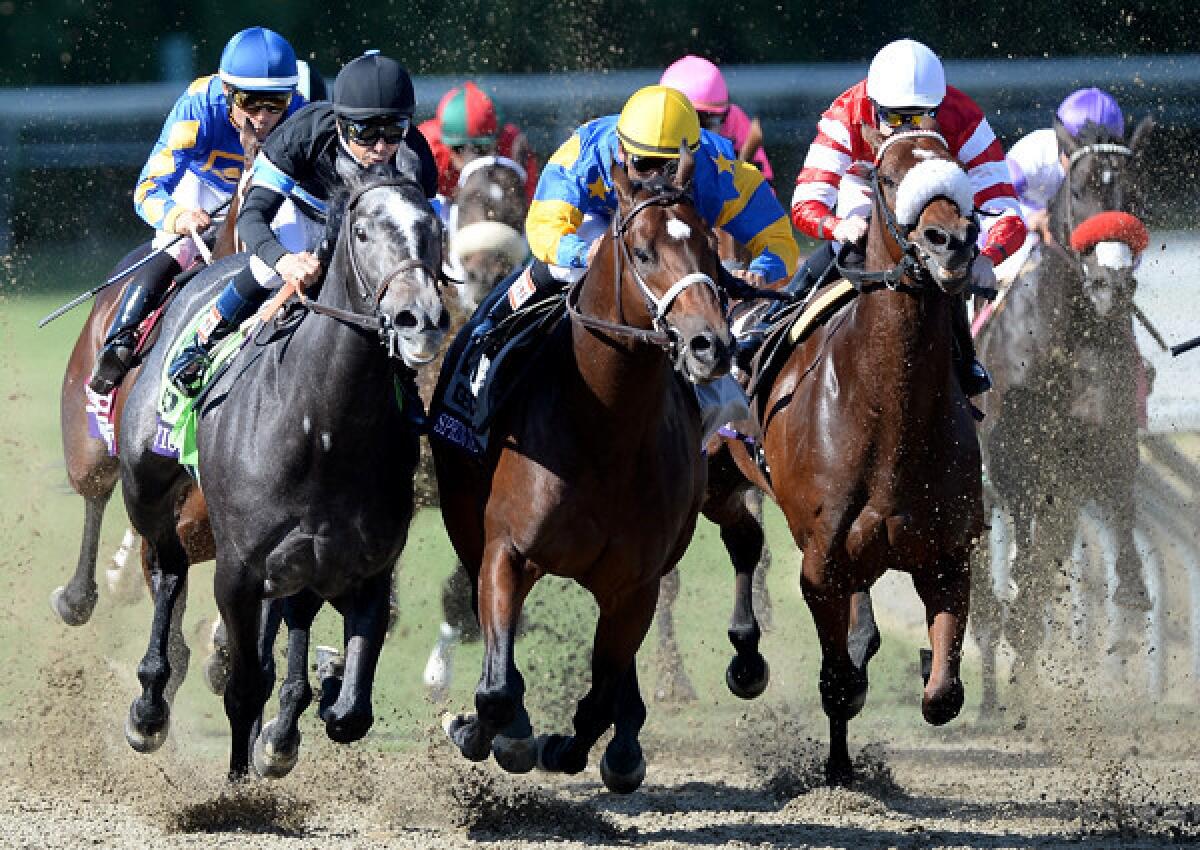
“The prime requisites for Santa Anita’s turf course were that it be sporting, imaginative and also a real test of thoroughbred ability,” Strub said in the 1953-54 Santa Anita media guide.
“Above all it must be sporty, like the courses of Europe. We are pleased that some of the Santa Anita features will embody the best of Epsom, Longchamp and Auteuil.”
Despite Strub’s optimism, it wasn’t love at first sight.
“There was a lot of skepticism,” Balch said. “Racing is not used to a lot of change. There was concern about the crossing of the dirt course. There were definitely some reservations. To begin with they ran a lot of non-stakes races to prove that there wouldn’t be any problems.”
The course could also be used for a 1¾-mile race if the horses continued past the finish line and ran the oval turf course again.
Balch even remembers that early on the course record was held by an optional claimer, showing the reservation to run the best horses down the hill.
The first concern was the right turn.
“You’re going downhill so fast that it’s more of a right than you think it is,” said Hall of Fame jockey Mike Smith, who won the Breeders’ Cup turf sprint in 2012-13 with Mizdirection over this course.
“Then when you come off the turn and cross, you have to turn left but the horse wants to pull you right. So, you have to take a hold of the inside reins.”
A study shows that despite the difficulty for the jockey there is no physical impact for a horse to suddenly make a right turn after a lifetime of lefts.
Mick Peterson, head of the the University of Kentucky Ag Equine programs, along with Jeff Thomason of the Ontario Veterinary College, conducted a study at Woodbine in Toronto on the effect of right and left turns on horses.
“We found no difference in their hooves,” Peterson said. “What I think is happening is that they are essentially making enough banking that they can load equally.
“The biomechanics is they can balance their loads. It’s less true on a dirt track.”
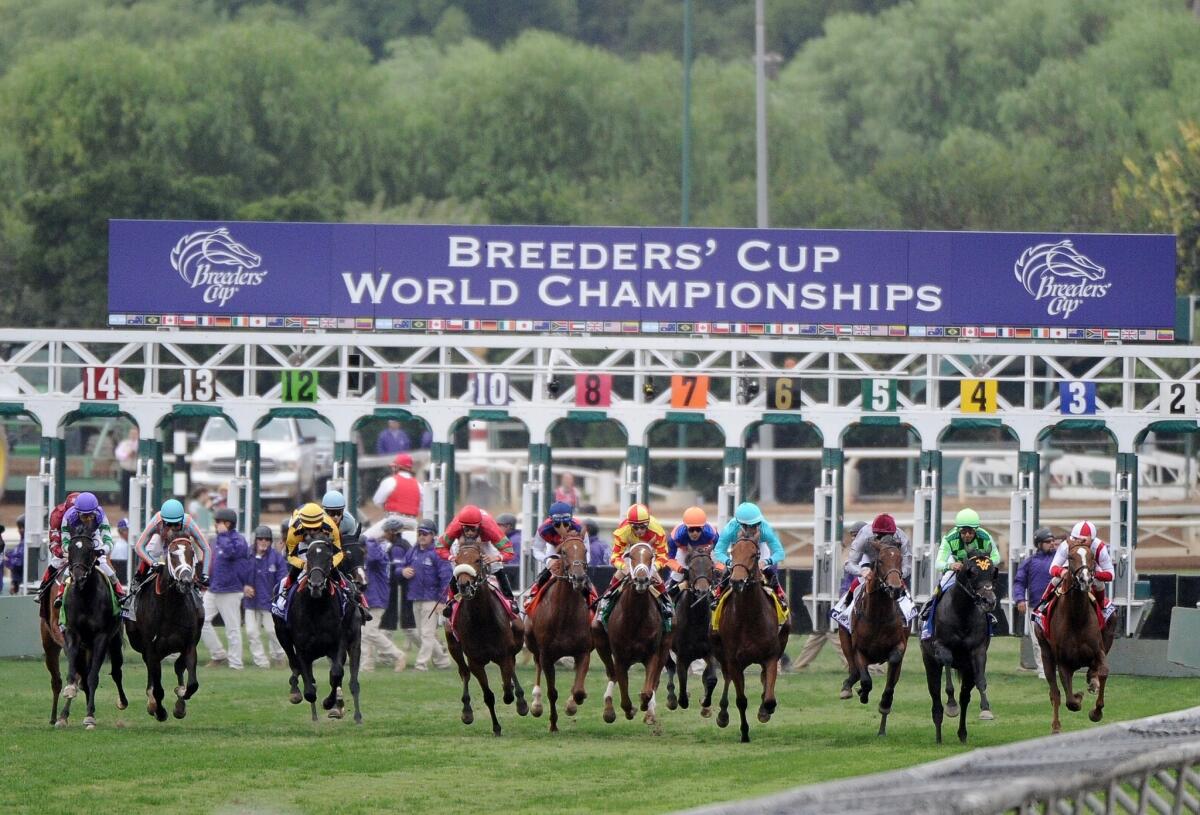
The other main concern was crossing from turf to dirt to turf.
“My biggest fear was the transition from turf to dirt is what happens when there is a wet spot,” said Peterson, who added it was also the biggest concern of Santa Anita track superintendent Dennis Moore, with whom he keeps in contact.
“They’ve gone through several iterations and put a dam up that keeps water from running on to the transition area. They make constant measurements on the dirt and turf every day with the goal of making it completely consistent.”
The optics are such that it appears horses are spinning out of control when they switch from turf to dirt but in fact horses may be repositioning themselves for the stretch run.
“Once you cross over the dirt you go outside if you need to,” Talamo said. “Before the dirt they aren’t that wide. When they cross it gives everyone a chance to have clear racing room.”
Still, not all horses take the surface change. Some never adjust but most do.
“Some try and jump the dirt but it’s too big to jump,” Smith said. “If a horse really doesn’t like it when they cross [in warmups], what a lot of riders do — and we learned this from Eddie D — is you don’t show them where it’s at. Try and have the horse in back of somebody.
“If you have one that is the speed, shake their head before you cross so that they focus on you instead of the dirt. If one doesn’t like to cross, it’s better to follow someone else.”
The worst-case scenario is a horse tries to jump the dirt.
“You get some that try and jump it all the time,” Smith said. “It’s not fun. It’ll take your breath away. You hope they land OK. Surprisingly very few have ever gone down.”
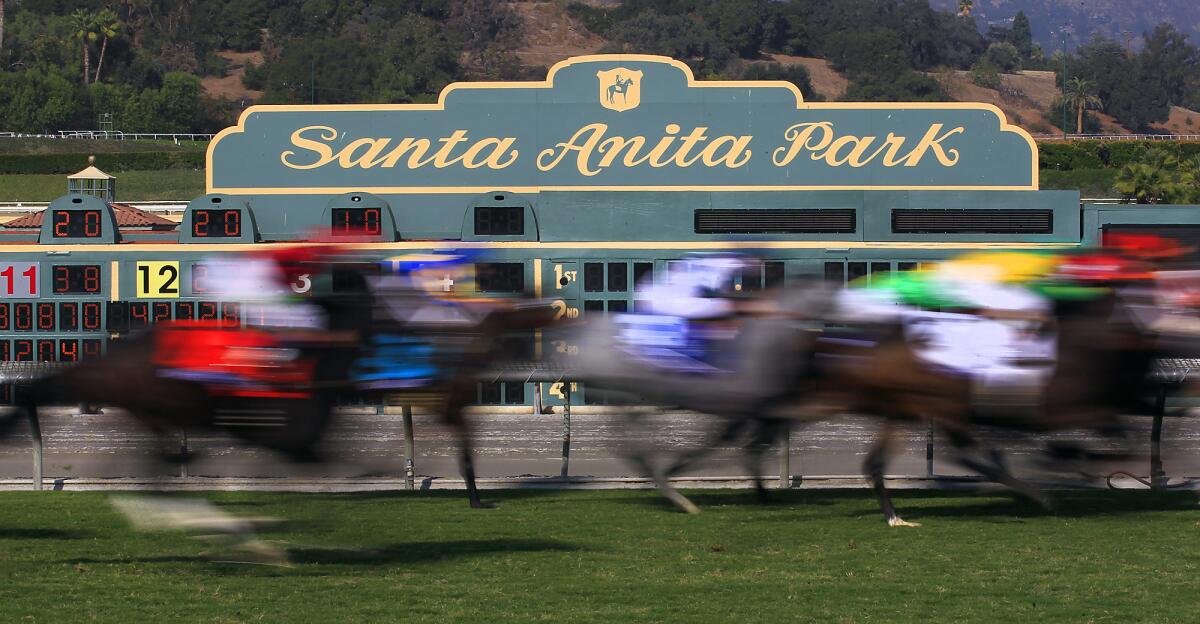
As large as the elevation drop appears to people in the stands, it’s only 29 feet from the top to the finish line. Still, intuitively you would think it’s a speed favoring race. Not the case.
“It’s a sprinter’s course but plays more like a 7-furlong race,” said trainer Richard Mandella, who has had his share of success down the hill. “Amazingly enough, horses have to have a finish. Speed horses will often stop. It plays like a seven-eighths [of-a-mile] race.
“That is a puzzlement; because it’s downhill, you would think it’s more like 5½ or 6 [furlongs]. Enough past performances show a horse has to have a good finish.”
Talamo, 27, certainly agrees with the veteran trainer Mandella, 66.
“I would pick a miler over a sprinter any day because of tactics,” Talamo said. “Speed is good down the hill but you have to hold it for quite a long ways. It favors horses that can sit back and have finish.”
But of all the tips to running this course, Delahoussaye is the go-to guy.
You don’t always see it, but Delahoussaye let loose with one of his secrets to winning on the downhill course. You ignore the right-hand turn.
“If you are on the inside and it’s tough to make the right turn then just stay straight and cut the corner if you can do it,” Delahoussaye said. “It depends on traffic. Some guys just follow the pack and can’t make it a straight shot. It’s mostly placing your horse. It’s not very difficult. If you got a tactical horse, I’d much rather cut the corner and save ground.”
There is no question to the popularity of the downhill turf course. The fields are usually full and the betting is robust.
Monday’s first race is the first of four that day. There are two more on Tuesday, closing day for Santa Anita’s signature meet.
After all, who doesn’t love a 6.4022 furlong race down the hill with a right turn and then crossing the dirt?
More to Read
Go beyond the scoreboard
Get the latest on L.A.'s teams in the daily Sports Report newsletter.
You may occasionally receive promotional content from the Los Angeles Times.

